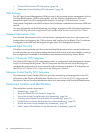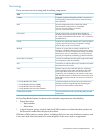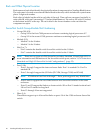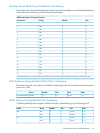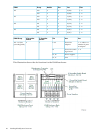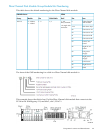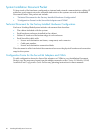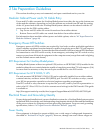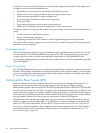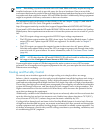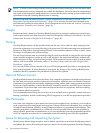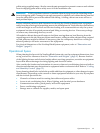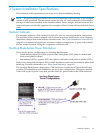exceeded. Severe electrical disturbances can exceed the design specifications of the equipment.
Common sources of such disturbances are:
• Fluctuations occurring within the facility’s distribution system
• Utility service low-voltage conditions (such as sags or brownouts)
• Wide and rapid variations in input voltage levels
• Wide and rapid variations in input power frequency
• Electrical storms
• Large inductive sources (such as motors and welders)
• Faults in the distribution system wiring (such as loose connections)
Computer systems can be protected from the sources of many of these electrical disturbances by
using:
• A dedicated power distribution system
• Power conditioning equipment
• Lightning arresters on power cables to protect equipment against electrical storms
For steps to take to ensure proper power for the servers, consult with your HP site preparation
specialist or power engineer.
Grounding Systems
The site building must provide a power distribution safety ground/protective earth for each AC
service entrance to all NonStop BladeSystem equipment. This safety grounding system must
comply with local codes and any other applicable regulations for the installation locale.
For proper grounding/protective earth connection, consult with your HP site preparation specialist
or power engineer.
Power Consumption
In a NonStop BladeSystem, the power consumption and inrush currents per connection can vary
because of the unique combination of enclosures housed in the modular cabinet. Thus, the total
power consumption for the hardware installed in the cabinet should be calculated as described
in “Enclosure Power Loads” (page 46).
Uninterruptible Power Supply (UPS)
Modular cabinets do not have built-in batteries to provide power during power failures. To
support system operation and ride-through support during a power failure, NonStop
BladeSystems require either an optional UPS (HP supports the HP model R12000/3 UPS) installed
in each modular cabinet or a site UPS to support system operation through a power failure. This
system operation support can include a planned orderly shutdown at a predetermined time in
the event of an extended power failure. A timely and orderly shutdown prevents an uncontrolled
and asymmetric shutdown of the system resources from depleted UPS batteries.
OSM provides this ride-through support during a power failure. When OSM detects a power
failure, it triggers a ride-through timer. To set this timer, you must configure the ride-through
time in SCF. For this information, refer to the SCF Reference Manual for the Kernel Subsystem. If
AC power is not restored before the configured ride-through time period ends, OSM initiates
an orderly shutdown of I/O operations and processors. For additional information, see “AC
Power Monitoring” (page 95).
32 Site Preparation Guidelines



